How to unscrew the nuts?

Many people face the loosening of a rusty nut in life. Often the part gets stuck so firmly that it is simply impossible to move it. How to fix the problem and unscrew the rusted part with a minimum of effort will be discussed in this article.
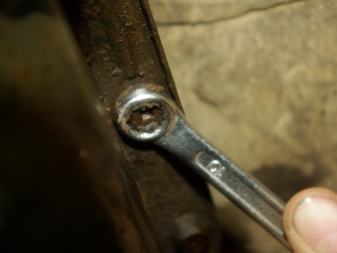

Necessary accessories
Due to the interaction of metal products with oxygen in conditions of high humidity, corrosion can appear on the surface, that is, simply rust.
When formed, it increases in size, which leads to the "swelling" of the nut.

Rust is not the main cause of poor loosening - there are others.
- When contaminated. In the event that the thread is covered with a layer of dirt, dust or metal shavings.
- If the bolt and nut are tightened firmly the metals stick together, which makes it difficult to unscrew the parts.
- When using a poor quality tool. If a wrench or other device is used in the work that has sharpened edges or another defect, then it is unlikely that it will be possible to unscrew the part.
If the part is severely rusted, it can be unscrewed in different ways: using chemicals, mechanically and physically.

By choosing the right wrench, socket wrench, or mechanical wrench, you can solve the problem. Do not twist the rusted part using force, otherwise there will be a possibility that the thread will be torn off or the tool will break during work. Using a box hex wrench will help solve the problem.

Chemicals will help to cope with the task. Experts recommend:
- use WD-40;
- moisten the part with kerosene or choose brake fluid for this;
- apply gasoline or carburetor cleaner.
WD -40 is considered a good tool for removing sour threads. When using, you need to take a stiff brush and remove dirt from the part. Then you should pour a small amount of the mixture over rusty parts and wait a little. If it is not possible to unscrew the nut immediately, the procedure must be repeated.

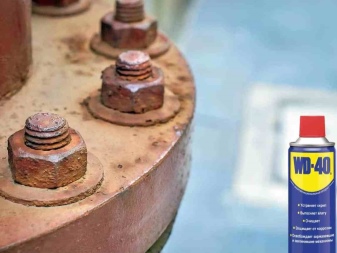
You can also solve the problem with ordinary vinegar, alcohol or a drink in the form of "Coca-Cola", which contains inorganic phosphoric acid.
Its presence in "Coca-Cola" has a low concentration and low activity, therefore, its treatment will help remove minor corrosion.
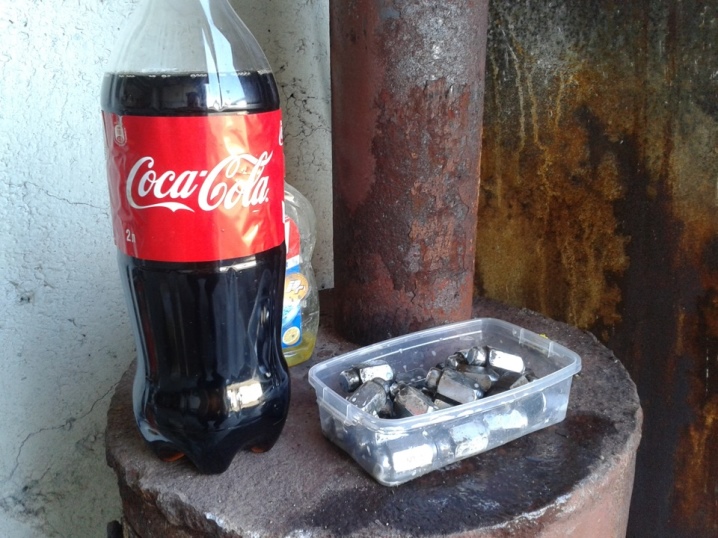
Which way to unscrew?
Fasteners can be right-handed or left-handed. With the right-hand arrangement, the part is unscrewed counterclockwise. At the same time, a part with a left-hand thread must be unscrewed in the reverse order, that is, in motion.
To determine in which direction you need to move, you should carefully examine the fasteners. The nut is moved to the side where the thread is "raised". This will allow you to choose the right direction and unscrew the part, and not screw it tightly.

How to unscrew different nuts?
Many are interested in what to do if the nuts are very rusty, and how easier it is to unscrew such parts at home. There are many ways to remove rust. In each specific case, it is better to use certain methods of correcting the defect.
There are mechanical and physical ways to cope with a task: this is tapping and using a lever. When tapping, take a regular hammer and tap the nut with it, trying not to bruise it. This is usually enough to get the sticking off and the joint yields.


If the problem persists, you need to take a screwdriver and apply force to the part. It is important not to hit it on the thread, otherwise the part can be wrinkled.
The use of chemicals that help dissolve clogging and remove rust will help to solve the issue.

Stuck
The kitchen and sanitary rooms are damp areas, which is why rust can form on some products. In that case, if the drain in the sink is clogged or corrosion appears on the toilet cistern or on the pipe, it is advisable to use "Coca-Cola". By the way, the use of any concentrated acid will help to get rid of rust at home. Lemon powder or vinegar essence is suitable for this purpose. Applying a few drops will fix the problem.


If you need to unscrew the part on the mixer, you can do this by tapping. Using a small hammer, you need to hit the edges. So, moving in a circle, you need to walk through the part several times. This process leads to the formation of mini-cracks in the metal, then to deformation and rapid destruction of the corrosion layer.
It is impossible to make strong blows to the base, otherwise the deformation will be very strong.

To remove the stuck part, take one of the above chemicals and apply to the surface to be treated. It is important to moisten the element abundantly with the product and leave it on for 20-30 minutes. After half an hour, you need to take the tool and try to unscrew the nut. If the part has become strongly attached, it is recommended to process it again with the chosen agent and let it stand for a while. For better interaction, it is recommended to take a small cloth, moisten it and screw it directly onto the nut.

The work process is as follows:
- you need to take a metal brush and clean the threads, then apply permeable WD-40 grease to the hub nut;
- soak the hub;
- let stand for 20-30 minutes;
- put the head of the key on the part and hit it with a hammer, increasing the force of the blows;
- unscrew the part.
A change of direction will help to remove the stuck part. Before loosening the connections, you can try to tighten them.
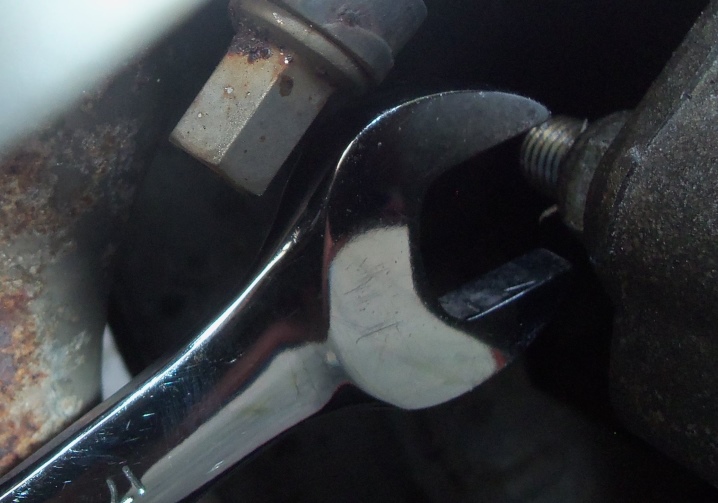
To speed up the unscrewing process, you can easily knock on the product with a hammer. If there is no result, you can try to move the part with a strong jerk. For a small element, the "swinging" method is suitable, that is, back and forth movements.
It can be quite difficult to unscrew a sour, rusted nut on the exhaust manifold or on the muffler, as they stick strongly due to the high temperature.
Many people understand how difficult it can be to remove a hub nut. To speed up the process, you will need steel tools in the form of a powerful screwdriver, an iron tube, a stiff brush, and WD-40.
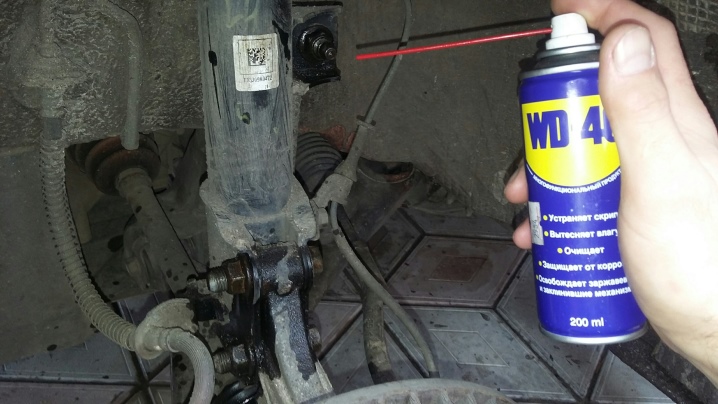
With alternating action in different directions, the destruction of the rusted layer will occur.
Plucked
If all the previous options were useless and the edges of the part were torn off, all that remains is to cut it off. This can be done with a grinder, a hacksaw for metal, a chisel or an electric drill.
You can also clamp the torn off part in a vice, clamp, take pliers for work and unscrew with a pipe wrench.
If the edges of the nut turned out to be licked, you can hammer in a large-sized part from above, then drill a recess, then insert a strong metal rod and try to unscrew the fasteners.
In addition, you can take a welding machine and weld two nuts to it, and then unscrew the top part along with the welded one.


Plastic
Usually plastic nuts have a different shape and size than metal nuts.
Given the pliability of such a material, it is not always possible to use a pipe wrench or a vice in work - in this case, a girth of a larger perimeter is needed.


To unscrew the plastic part, you can take:
- special factory key;
- puller for auto oil filters;
- pliers with a wide opening.
If you press the part on both sides with wooden blocks and simultaneously hit them with a hammer in the direction of twisting, you can easily unscrew the plastic element.


In a hard-to-reach place
If the parts are in hard-to-reach places, it can be quite difficult to unscrew them with a regular wrench. In this case, it is better to take:
- ratchet;
- a key with a short handle;
- a ratchet with the maximum number of teeth;
- extension cord and flexible wire for heads.
You can lengthen the handle or choose a longer "knob", put on a metal pipe with a key. Doing so will unscrew the connection. It is important to work carefully so as not to break the edges.


Recommendations
In order not to be tormented by the question of how to unscrew the rusted nuts, when installing them, it is important to treat the threads with a special lubricant. You can use graphite, silicone or Teflon. Many masters do not recommend using lithol or solid oil. These tools are more suitable for dynamic rather than static nuts and bolts. Choosing them will lead to the fact that such a lubricant will soon ossify and interfere with the rapid unscrewing of the parts.
Experts recommend working by heating the part. A change in temperature leads to expansion of the metal and, as a consequence, to the destruction of the corrosion layer and loss of strength of the thread connection. For heating it is better to take a blowtorch. A building hair dryer or lighter will also work.

The parts should be heated carefully; it is not recommended to use the device near wooden surfaces. The nut is heated red hot during operation, and then unscrewed with a key.
You can unscrew a rusty part with a wax cup. To do this, you need to take a little wax or children's plasticine and mold the product in the form of a mini-cup. The height of the sides of such a product must exceed the height of the nut. Sulfuric acid is poured into an impromptu cup and part of the zinc is added. Due to the interaction of the components, a galvanic effect will occur, and the rust will begin to disintegrate. After carrying out such an operation, it will become much easier to unscrew the nut.
Using one of the listed options, you can easily unscrew the stuck nut. More attention should still be paid to prevention and the use of special agents that prevent metal corrosion.

How to unscrew the nuts, see below.













The comment was sent successfully.